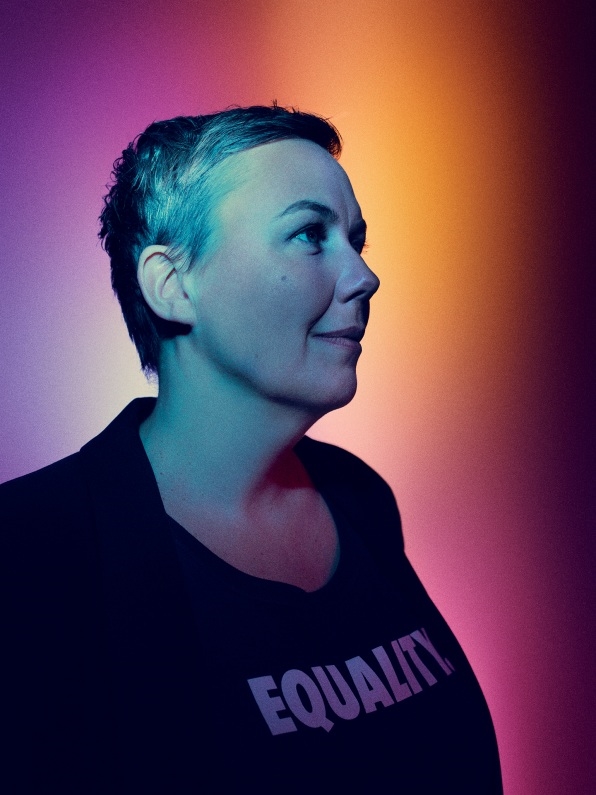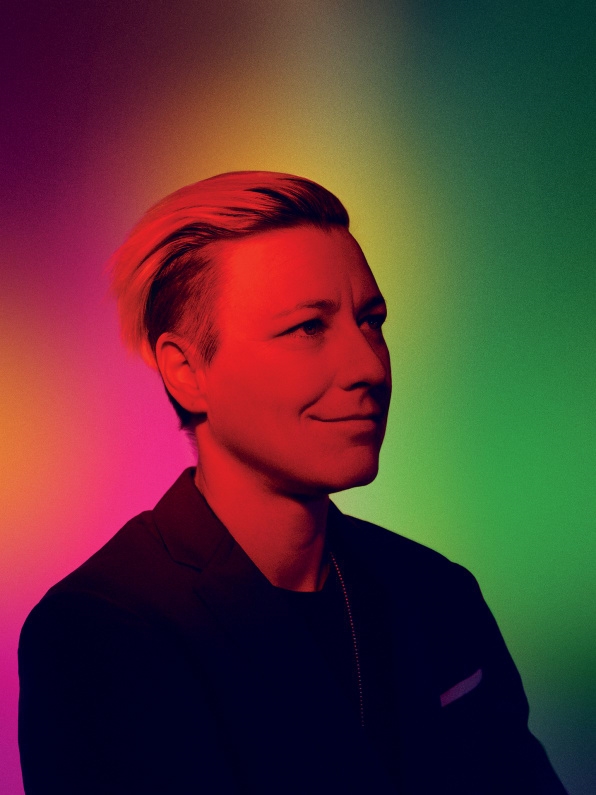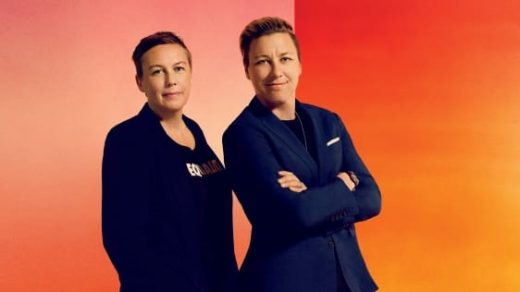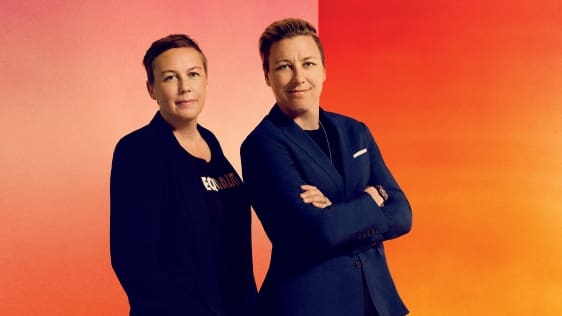Why Nike Sees Social Responsibility As An Opportunity To Innovate
Environmental protection and equal opportunity are two of today’s most pressing global issues. Nike sustainability head Hannah Jones and soccer star Abby Wambach talk with Fast Company‘s Jill Bernstein about how international corporations and individuals alike can bring meaningful change to the world.
Fast Company: How did you two become challengers of the status quo?
Abby Wambach: The thing that led me into activism is that I am a little different. I’m so lucky for that. I always try to fight for the little guy or the voiceless, because in certain parts of my life I’m the minority, whether because I’m gay or a woman. That’s where any true activism is born—my heartbreaks. Find out what breaks your heart and do whatever you can to fix it.
Hannah Jones: When I was 16, I had a white Mohawk and I was a DJ on a pirate radio station that kept getting raided by police. Let’s just say that my parents didn’t think that was an entirely good career plan. But I had a mentor who sat me down one day and said, “Hannah, at some stage you’re going to have to work out for yourself whether you are more powerful shouting at the system from the outside or changing it from the inside.” That has guided everything I’ve done ever since.
FC: Athletics is a powerful platform for change. It’s got a global reach, a workforce that spans from the factory to the playing field, and celebrity role models. How do these things help you with your current efforts?
HJ: When I grew up in the U.K., girls didn’t play soccer; we just didn’t. What Abby and other women in sport are doing is telling girls around the world, “You get to play soccer.” This is the new normal. [At Nike,] we’re all about innovating the new normal. Leather has a really big environmental footprint, but everybody loves leather. So our [new Flyleather] shoes are made of waste that comes from the leather process. It’s engineered. It reduces the carbon footprint by 80% and the water footprint by 90%. Oh, and by the way, it’s four times lighter than anything else that you’ve ever used, so athletes love it.
AW: Whether we realize it or not, we have all been poisoned a little bit by what I call the patriarchy. There weren’t enough girls’ soccer teams to play on when I was young that were good enough, that would challenge me and make me a better player, so I had to play on the boys’ team. I always used to say, “I had four older brothers growing up and they made me really tough.” Well, that is so not feminist of me. So I have to rethink, like, Why did I say that? Because I’ve been conditioned to believe that men, that my brothers, made me tough. [But] I am really tough, with or without my brothers, okay? Having two older sisters, as well, made me tough. It made me badass in my own right. When we’re trying to inspire girls, we have to really consider, How poisoned am I? We have to first look in the mirror. From there, we can make true, positive change. So that when a 13-year-old girl goes through her life, she is not thinking the way I thought.

[Photo: Herring & Herring; Set designer: Wunderkind; Grooming: Kim White, Zuleika Viera]
FC: Creating change involves communicating and connecting with people emotionally. How do you go about that?
HJ: Sustainability was always framed as something that was counter to business success, that if you made a product that was sustainable, somehow it would be less good or more expensive. And sometimes that’s been true. I mean, think of green, scratchy toilet paper. Not good, right?
The reframe that happened is that we stopped seeing sustainability and labor rights as a risk and burden [and instead] as a source of innovation. Whether it’s about women’s rights or sustainability or women in the supply chain, if you flip it to be about an innovation opportunity, people step into that space with less fear. And that creates possibility.
AW: Think about what’s happening in our culture. We’re getting inundated with crazy. If we can separate ourselves from the crazy for a brief moment, we have a beautiful opportunity. When Philando Castile was killed, Twitter went crazy. And I was scared to say the wrong thing. Everybody gets ridiculed whether you say something or you don’t say something, or you say it the wrong way or you misspell it. Sydney Leroux, my teammate, who is a woman of color, texted me and said, “Abby, your silence is deafening.” So my advice is to just say something and know that [if] it’s grounded with the right intention, it will be heard with that same intention. And if somebody takes it wrong, that’s on them, you know? We just have to say something.
FC: How do you choose the words?
HJ: We [at Nike] talk a lot about safe spaces. I like the words brave spaces because I like radical candor and courageous conversations. It starts by surrounding yourself with people who don’t think like you and don’t look like you and have different backgrounds. If you contest narrative and language and ideas and solutions within that space where everybody feels they belong and they have a voice, you’re going to understand pretty quickly whether your language and your idea has resonance. I think it’s the catalyst that you need to spark new solutions.
AW: We’re all in shock in certain ways. It’s like you can’t talk to the person across the aisle. I think that that’s bullshit, truthfully. The only way we can actually start having conversations is to enter with curiosity instead of predetermined judgment. Fear can’t stand proximity. So if you learn how to talk with people, you will find commonalities. And if you’re questioning whether you should do something, whether it’s going to piss people off, think again.
HJ: There is a difference between being disruptive and destructive. If you’re disruptive and you’re constructive, then you push the argument forward, you push the idea forward. But disruptive as a destructive force just takes us back.
AW: It’s immature, right? You can’t just rail. You have to have solutions.

[Photo: Herring & Herring; Set designer: Wunderkind; Grooming: Kim White, Zuleika Viera]
FC: President Trump caused a stir in professional sports when he started tweeting negatively about player protests. Abby, you spoke out in favor of players being able to express themselves, and Nike quickly issued a statement in support of athletes. What are your roles in these larger cultural debates?
AW: I’m not going to say that it’s not complicated. My former teammate, Megan Rapinoe, had been taking the knee in support of [Colin Kaepernick]. It’s a conversation that has completely lost the initial meaning. Now it’s about respect and the flag instead of what it was truly about, which is black lives being brutally assaulted by police officers. Having played on the National Team for the better part of my career, I am a fierce patriot. Last year, when this conversation was going on with Megan, I found myself really conflicted. It wasn’t because of Colin or Megan, it’s because of this thing that I’m trying to figure out, the institution that I was raised in, the things I talk about as a U.S. citizen and as a patriot. What am I standing and pledging allegiance to?
Truthfully, Colin Kaepernick is an American hero, somebody who has put his life’s work at risk and is paying the price for it. If he were to go back and try to change things, do I think he would do anything differently? Hell no. Because of the conversation this is sparking. We have to keep the conversation going in the direction of where it began.
HJ: I sit in a corporation for which this is an incredibly important conversation. We learned the hard way that when you don’t use your voice for advocating for good and you don’t stand up for your values, that silence quickly becomes misinterpreted. We come from a long heritage with [Nike founder] Phil Knight of always standing for the athlete, always. He is fierce about it. At key moments in cultural context, political context, we have to stand for what we believe in.
And we believe in the science of climate change, so we have stood loudly and proudly for the Paris agreement. We have built up coalitions of the willing to fight for [it]. And when the administration decided to withdraw from the agreement, we were overt about our disagreement. We have consistently stood with LGBTQIA, including being part of the amicus brief for civil union. We continue to stand for it. We have stood against the immigration ban. And then we’ve stood with all those who knelt. We will continue to use our voice. It’s not an easy space. But a brand that doesn’t stand for something is no longer a brand worth working for.
FC: You two seem to accentuate the positives, even in difficult situations. Why?
HJ: William Gibson, the sci-fi writer, said the future is here, it’s just not distributed equally.
Think about the sustainability movement—you fly across the world and you see windmill farms everywhere. It doesn’t matter what the U.S. administration is doing; we are all moving to renewable energy. Nike will be at 100% renewable energy in all our facilities in the Americas within the next couple of years. And it’s not just because it’s an act of benevolence. It’s because it’s good for business.
This story was adapted from the Fast Company Innovation Festival.
Fast Company , Read Full Story
(27)



